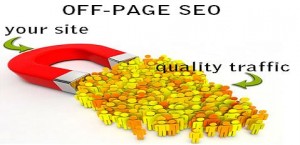Are you aware of these facts involving the Web, user queries, and search results?
•According to a statistics update as of 31 March 2012 (Q1 2012), there are approximately 2.3 billion Internet users worldwide.
•The top search engine is Google with an estimated visit of 1.5 billion. Bing follows with around 249.5 million, while Yahoo! Search comes in third with approximately 225.8 million.
•Around 79% of individuals (performing queries) state that they prefer natural or organic search results (opposite to paid search and advertising).
•About 80% of users say that they seldom or never click on sponsored links.
•Approximately 75% of these people never go beyond the second or succeeding pages of search results.

Given such staggering numbers, how can you make your website visible to billions of users? What is more, how can you land on the first page, so it will be easy for your target visitors to find you?
The Key is Search Engine Optimisation (SEO)
If you are new to (SEO), you may have less knowledge about getting that top spot on search engine result pages (SERPs). This is why we are going to talk about a few important strategies to help you attain this goal.
Now, if you already have considerable learning on this matter, it does not mean that you cannot make good use of this article. Who knows, you may just pick an idea or two, which you may not be familiar yet.
So, let us get started.
SEO and Its Two Main Aspects
These are on-page and off-page. The former generally involves techniques that allow you to improve your website content as well as other internal elements. The latter, on the other hand, encompasses tactics meant for external factors.
What exactly are these? You will know through the next insights.
Looking into Off-Page Optimisation

As mentioned, this aspect includes components outside your website. Technically, you or any of your webpage’s coding has no control over these. Instead, you can make them work to your advantage.
The following tips will tell you how to do this.
#1 Earn and generate backlinks
Most of the strategies below generally relate to inbound link building, which, in a way, you can have power over. This is possible by producing highly valuable and informative content. And, if many webmasters consider the information on your portal compelling and relevant, there is a huge likely that they will link to the page or your site.
Now, what you cannot manipulate though is the amount or quality of backlinks you get, which is mostly due to the following:
•You cannot ask blog or website owners to give you one.
•You cannot exchange links with other sites.
•You cannot just add a link on your blog comments or on discussions boards.
If you insist on going against these ideas, then you are already practising link schemes.
On the other hand, your content may catch the interest of “spammy” or unreliable domains. When this happens, there is a high likely that they will connect to you. This can greatly affect your ranking, especially if Google penalises you.
So how do you know if your site is undergoing penalty?
Well, you will notice the impact through a low ranking in SERPs. Then again, you will not know for sure if you do not check your link profile thoroughly. You can do this using the following procedures:
1.Access Open Site Explorer (you need to register to be able to use it) and then, enter your site’s URL to begin searching or filtering the links.
Download the excel file and run it through Link Detective to automatically classify the link types or anchor texts pointing to your website. The tool will provide you with a report that shows dead or unknown links as well as various link sources (e.g. social media, article, footer, etc.).
2.Alternatively, you can hire experts who can help you with SEO audit and link data analysis. This way, you can easily distinguish unnatural (or suspicious) and broken links from the good ones. You can also determine a site’s page authority. Most importantly, these professionals can give you ideas on taking out damaging inbound links.
3.Another good method is to use Google Webmaster Tools (GWT), which provides you with several data about your website other than your link profile. But you have to create a Google account and set up your site on GWT before using its available features.

Given that Google is the number 1 search engine, it is only ideal to make the most of its products (e.g. AdWords, Keyword Tool, Analytics, Insights for Search, etc.) and services (e.g. Search, Maps, Gmail, Google+, etc.).
4.Fix your problem regarding “spammy” links once you have the report. You can use the following methods for to carry out this step.
•Get in touch with webmasters (especially those with the most number of suspicious backlinks directing to your website) and ask them to remove the links.
•Establish a great presence through well-written, compelling, and informative content to help you earn editorial links from popular and trusted websites within your industry. The more inbound links you obtain, the less noticeable your dead links will become.
•Send Google an email, which states that you do not have any affiliation with the irrelevant sites linking to you, and a reconsideration request.
#2 Create a profile page
Do this on major social media sites like Facebook, Google+, Twitter, and LinkedIn, where you can integrate vital SEO strategies such as keyword use and link building.
But since we are talking about off-page optimisation, let us focus on generating backlinks through posting a status update about your latest blog post or content and integrating the webpage URL in it. As you are doing so, remember to begin your message with a relevant keyword, given that the first few words appear on the page of your network as snippets.
Now, if there is one vital tip you must not forget, it is to minimise this strategy, as doing it regularly makes social page from look like Web spam.
#3 Join niche-related forums
What do I mean by this?
You are probably aware about discussion boards. Niche-related forums are these – message boards -, yet specialising on sub-categories. If, for instance, you are a travel blogger, you can participate in discussions that focus on this specific topic. On the other hand, you can join conversations on affiliate marketing if you wish to earn money by promoting other entrepreneurs’ merchandise.
Taking part on these virtual communities is a great way to generate inbound links. Plus, it will keep you up to date with the “real world” applications of your niche.
While you are looking for message boards, do not forget to choose only those related to your industry to keep your links relevant. Moreover, give practical and informative responses rather than focus solely on link building.
#4 Guest post on blog sites
This technique normally involves requesting to write articles for other bloggers, particularly those who have already established a credible name for themselves. The more your URL appears in authoritative and established sites, the more you are able to increase your site’s visibility.
#5 Submit to web directories
While it does not directly provide you with a higher page ranking, it lets you widen your online exposure and credibility.
As a tip, it helps to choose reputable directories to help you get the users and search engines’ good side. One great means of determining the credibility and popularity of a Web directory is by looking up its PageRank. If it has a high rating, you can send your website to it. The following are among the top directories:
•dmoz.org
•prolinkdirectory.com
•phillyfirstonthefourth.com
•a1webdirectory.org
•9sites.net
#6 Give comments
The great thing about the Internet is that it fosters interaction among people who share a common interest, even among some business competitors.
This is where blog commenting comes in handy, as you can drive traffic, build links, and develop affiliate relationships with other enterprises similar to yours by giving “on-topic” feedback or insights on their site.
#7 Engage in social sharing
Uploading videos and images is all the rage these days, what with the immense popularity of sites like Pinterest, Tumblr, YouTube, and SlideShare. You can follow this trend too by converting your content into PowerPoint presentations or creating video scripts. Once you have posted these, link back to your site.
Conclusion
As you can see, these ideas are not very difficult to carry out. The best advantage of all is that these are free. Well, mostly, that is if you submit your website to paid directories. Then again, you can always opt for complimentary services.
Are you excited to begin your off-page optimisation project? If you are, keep these essential strategies in mind.
About the Author: Emma Tomlinson is the Head of Retail at Smart Traffic, a leading search agency providing SEO reseller packages to its clients.




